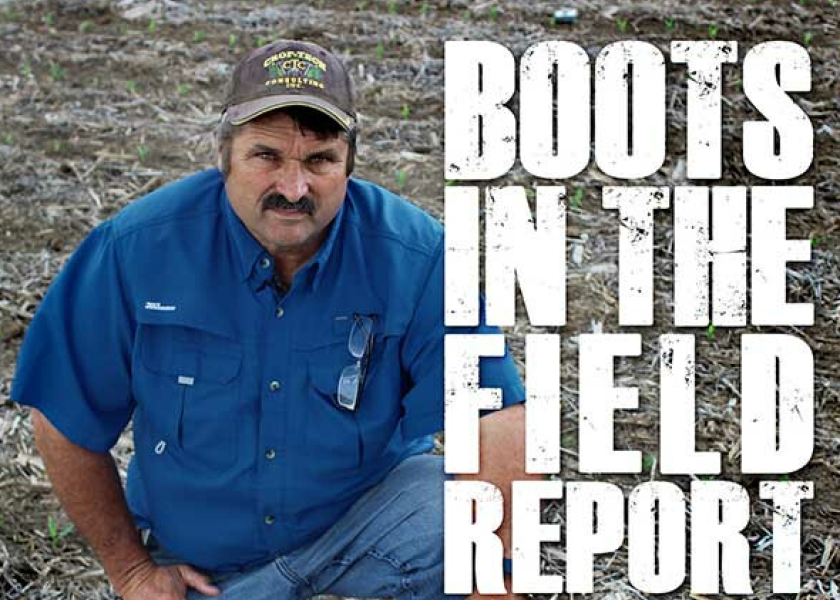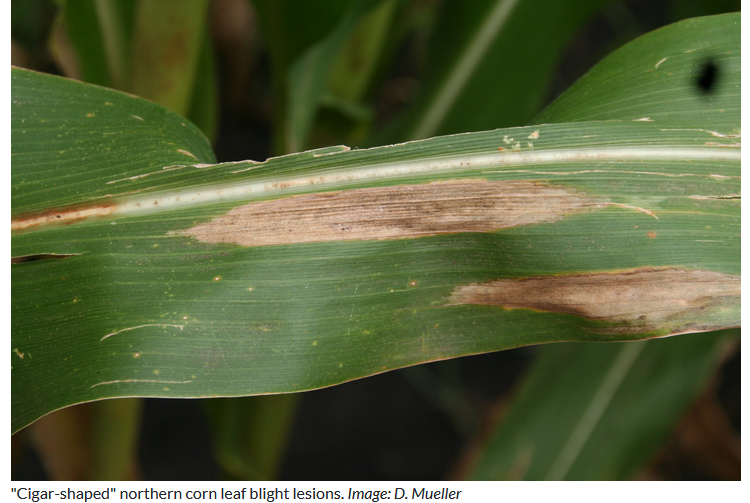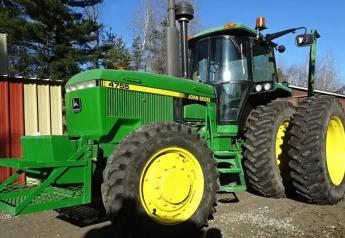Ferrie: Got Northern Corn Leaf Blight? Call Your Retailer

Disease pressure is building in many Illinois corn fields this week, according to Ken Ferrie, Farm Journal Field Agronomist and owner of Crop-Tech Consulting, Heyworth, Ill.
Northern corn leaf blight (NCLB) is of particular concern this season. Ferrie says if you see “any hint of it” to contact your retailer to see how quickly they might be able to treat.
“The concern is in some areas, farmers are having to wait up to two weeks for a plane to fly their fields,” he says.
As for treatment pecking order, Ferrie say to spray corn first and then soybeans.
If you’re unfamiliar with NCLB, check corn leaves for narrow, tan lesions – sometimes referred to as cigar-shaped – that form parallel to leaf

Since the early 2000s, both the prevalence and severity of NCLB have increased in the Midwest.
“During wet weather yield losses may be as high as 30% to 50% if the disease becomes establishes before tasseling,” according to Ohio State University Extension agronomists. “However, if leaf damage is only moderate or is delayed until six weeks after silking, yield losses are minimal. Severe damage caused by NCLB also predisposes plants to stalk rot and lodging, which may further reduce yield and grain quality (read more at https://bit.ly/3ffhjuu).”
Don’t be ho-hum about corn rootworm.
“I've been receiving pictures from guys running ground rigs, where the hood and the windshield are just covered with corn rootworm beetle,” Ferrie says. “A lot of them are the northern CRW, the green beetle, which is a bit of a surprise because our sticky traps last year indicated we’d have few CRW this year.”
Ferrie says several factors are in play.
First, the use of sticky traps isn’t an exact science and is still in the calibration phase.
“We catch the beetle in sticky traps by accident; we aren’t luring them in with a lure,” Ferrie says.
This year, central Illinois didn’t experience any timely rains to knock the CRW population down, like it has in other years.
Third, farmers are encountering more of the northern CRW, the green beetle, which has an extended diapause. That simply means eggs the beetle lays in the ground can sit there for two years before they hatch.
Last but not least, CRW beetles can move in from a neighboring field, and fields of pumpkins are of particular concern. “Some of our pumpkin fields are having problems with disease this year, so the beetles are moving early,” Ferrie notes.
If you have large numbers of CRW beetles, now is the time to do root washes. “If you’re seeing a lot of damage on your roots, whatever you’re doing to manage the CRW event, you need to do something different next year,” he advises.
Plus, don’t forget that if you have northern CRW, the eggs beetles lay this year won’t hatch until the 2023 season.
Wind damage? Round up a reel now.
Ferrie says fields in central Illinois have had more wind problems this season than usual, and that could spell trouble at harvest.
“If you have corn growing in all different directions, it’s going to be prone to break off at the ‘goose neck,’ so round up a reel if you can,” he advises.
Still time to register for Corn and Soybean College
Ferrie and team will be hosting the 2021 Farm Journal Corn and Soybean College program next week, Aug. 3-4. You can check out the agenda and register at https://www.croptechinc.com/cbc/
Some of the topics include:
- Cover Crops, Carbon and CO2
- Navigating through Nutrient Regulation
- Managing Your Subsurface Environment
- Maximizing the Environment for High-Yield Soybeans
- It All Starts in the Furrow
“Come early and be prepared to learn and be challenged about what you thought you knew,” Ferrie says.
Farmers from all across the U.S. are registered to attend, and you’ll have plenty of time to mingle and make new friends and see some old ones, too.
Check out the agenda and register at https://www.croptechinc.com/cbc/
Listen here for this week’s Boots In The Field podcast:







